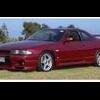Idle problem with Power FC
Announcements
-
Similar Content
-
Latest Posts
-
Was the failed sensor by any chance this one? Did it just fail or start pissing on itself? I ordered one too, for fuel pressure monitoring, and now I am hesitant to put it in, hehe. Where did you find a brand one?
-
You'd be insane, when a brand new 8HP is ~$4k, and all the work to put a 6 in would cost the same as an 8 and the 8 is a completely established swap. If you think that getting a cheap Falcon box is going to make it a cost effective exercise, then you're not accounting for the extra $10-15k that the task will consume.
-
By LiamsSXYR34 · Posted
any further information on this? also interested in putting a zf6 in behind a rb30! -
They're all horrible. X-Trails have had a nasty sounding 4cyl since forever, no matter what engine family it came from. The CVTs only made that worse. Then the whole Renault thing only made every Nissan that was contaminated by them even worse again. The only fun I've had in a X-Trail was having it blown sideways across a frozen Minnesota highway at 90 mph trying to make it to the airport to get out of the frozen hellhole of Hoth. Nearly died. Was great fun.
-
By BaronOBeefdip · Posted
Alrighty, I'll have to grab a couple pics and type out something soon in another post. I haven't driven a modern X no, this would be the first one really. Yeah the rental boxes are always cheap as chips right? So I'd doubt that anyone was handing out GTs to go and abuse. But I s'pose I could be wrong for sure. New cars these days though? Pretty unimpressed with what I see now; 20 years and all that, like you said. It just kind of worked out to have these two cars now. I'm pretty pleased with that, don't need much else. I'm sure you lads are right about the temps and for sure, you wouldn't have much time to drive 'em down there if you all were like me. I do hate sweating all over the seats though😆
-






Recommended Posts
Create an account or sign in to comment
You need to be a member in order to leave a comment
Create an account
Sign up for a new account in our community. It's easy!
Register a new accountSign in
Already have an account? Sign in here.
Sign In Now